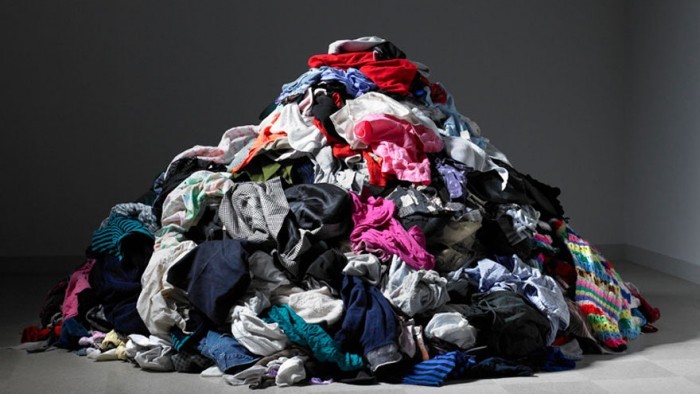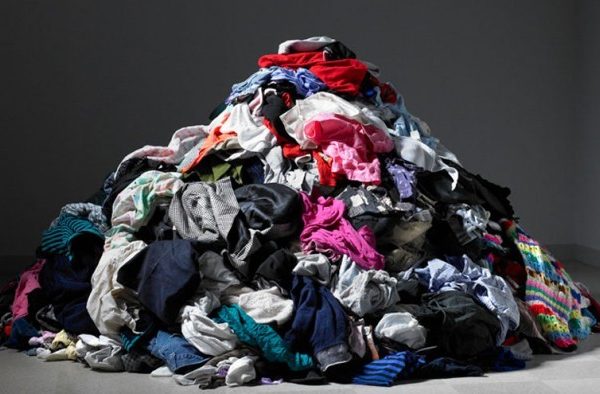
If you’re anything like me, you probably have a bunch of clothes in the closet that you love, but rarely wear. Sweaters that have gone untouched for seasons, jackets that seldom come off their hangers, shirts you insist will fit after you lose fifteen pounds (which will happen this summer, you promise). The sensible thing, obviously, is to either sell or donate these things, but that’s easier said that done.
There’s actually a term for this. Behavioral economists call it the endowment effect – the tendency for people to ascribe more value to things once they own them. There have been dozens of studies on this, but the first was at Cornell University sometime in the late 1980s. There, researchers gave students the opportunity to either receive a free coffee mug or Swiss candy bar, each with identical market values. Half the students chose the mug, the other half chose the candy, which showed a 50/ 50 split in preferences.
With a similar, but different group, researchers gave students free coffee mugs and told them they could trade them in for candy. You’d expect about 50% of them to swap, given the previous group, but only 10% did. In a third group, students received free candy bars and were given the chance to trade them in for mugs – same result. This experiment has been repeated in dozens of different iterations over the years, but they always show the same thing. People tend to value things more once they have them, which means they see things differently depending on whether an item is in their hand or on a store shelf.
There are lots of theories explaining why this is. Some say it’s because people have a natural aversion to loss; others suggest it’s because we value the status quo. Without going too deep into an academic literature review, the endowment effect helps explain why we can get stuck with clothes for years and years – despite having never worn them Or, worse, not even really liking them.
It’s hard to get around the endowment effect, but here are some strategies on how to dampen it:
- Only Keep What Sparks Joy: Marie Kondo has become something of a celebrity for her ideas on decluttering. Her most famous book, The Life-Changing Magic of Tidying Up, basically boils down to a simple tenet: only keep things that spark joy. That means going through your closet, picking each item up one-by-one, and getting rid of anything that doesn’t viscerally make you happy. That doesn’t have to mean reducing your wardrobe something minimally sized (::shudder::), but it does mean getting rid of things you don’t love. Penelope Green wrote a nice piece in the New York Times a few years ago about what it was like applying this idea to her own wardrobe.
- See Your Closet as a Store: If the endowment effect biases us towards things we own, try to imagine your wardrobe as a store rack. High-end, second-hand clothes tend to sell for about 30% off their full retail value these days. So, as you take inventory of what you own, ask yourself: “would I buy this at 70% off if I found it on the rack today?” If not, maybe it’s time to let go and get that money back into your pocket.
- Think of the Freed-Up Space: Maybe the best strategy for the inveterate clotheshorse – think of all the freed-up closet space you’ll have! By clearing out things you no longer wear, you’ll have space to store new things that you’ll actually use. What a novel concept.
- Be Ruthless: We’ve all heard the old saws. Sell things if they no longer fit. Sell things if they’re out of style. Sell things if you haven’t worn them in a year. Certainly good rules of thumb, but you have to really commit to make these work. Don’t waver; be ruthless. Frankly, those extra-slim Band of Outsiders oxford shirts will never it like they did ten years ago, and unless you have an Ask Andy account, you probably won’t wear critter pants again.
Pete wrote a good resource guide a few years ago on where you can sell and donate clothes. I’d say things below J. Crew in terms of quality are usually better off being donated – the resale value isn’t likely worth your time. Things above you can try to sell on sites such as Grailed, eBay, and StyleForum. It’ll hurt to see a $300 coat sell for $90, but that $90 is better than the absolute zilch you’re getting from it now.
